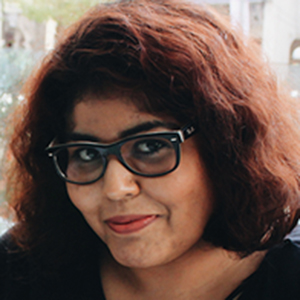On Friday, I was involved in a forum on the rights of Muslim women organised by my office.
 I was all ready for it. I made sure to collect the baju kurung I had tailored months ago in time to wash and dry it in time for the day. That morning, I woke up extra early to iron out the creases in my flowery orange, red and green flowery baju kurung and to put on a full face of make-up, something I haven’t done for work in more than six months.
I was all ready for it. I made sure to collect the baju kurung I had tailored months ago in time to wash and dry it in time for the day. That morning, I woke up extra early to iron out the creases in my flowery orange, red and green flowery baju kurung and to put on a full face of make-up, something I haven’t done for work in more than six months.
After I was done, I took a few minutes to look at the reflection staring back at me in the mirror. “Patutla orang ingat aku ni Anak Mami,” I thought.
Overall, I was very happy with what I saw. The colours suited me and the baju kurung was quite forgiving of my many curves (or rolls *wink*).
This was my first baju kurung in 15 years and throughout the day, all I could think of was “why did I not even think about getting one all these years?”, especially knowing how much I had loved wearing the baju kurung uniform in school.
My decision to get a baju kurung uniform in Form 2 was not an easy one, not only did I have to convince my parents that it was just a piece of clothing that I needed for choral speaking, I also had to battle myself, a 14-year-old with a limited understanding of second-wave feminism.
You see, I used to be of the opinion that baju kurung and tudung were “forced upon women to restrict them and obey the rules and desires of man (the gender, not kind)”.
As for the girls and women around me conforming to such rules, I felt an infuriating mix of pity and scorn towards them for being weak. That was pretty much my view of all traditional clothes for women – which is why vehemently stood my ground on not wearing the saree until I was well in my mid-20s and knew better.
So it was a personal struggle for me to put on the baju kurung and look at myself in the mirror for all I saw was a girl of 14 shackled by the chains men created to keep women in their “rightful place”.
Which was why in Form 2, I only wore baju kurung whenever my choral-speaking team went for competitions or performed.
I couldn’t wait to get out of the dreaded piece of clothing.
Yet, all that changed when I joined the team in Form 4. Then, I felt the baju kurung liberating! Its long sleeves and floor length skirt provided much-needed respite from the blistering sun, its straight cut and long top did not make me feel self-conscious of my large breasts which made wearing the secondary school pinafore a torture, and I could sit as kangkang as I wanted and not worry that I might flash others.
From a symbol of oppression, the baju kurung had transformed into the most liberating piece of clothing I could wear to school since shorts and T-shirt were restricted to sports-only activity.
But I could not say the same about the tudung or the saree as I saw these as the “proof of goodness and morality” with which people judged women.
That baju kurung though, I would go on to wear that one set for most of my final two years in secondary school, washing and drying it overnight so that it would be fresh the next day.
Fast forward 15 years and having discovered, through a personal journey of self-discovery and bullshit-dismantling, intersectional feminism, I now have a different opinion on the baju kurung, tudung, saree and all other “traditional” clothes: each is a piece of clothing steeped with its own heritage and history and not inherently bad or good on its own right.
It is the value society and people placed on these pieces of clothing that can be bad or good.
The tudung is a beautiful piece of headgear when donned willingly by a woman as an act of religious devotion, when she makes that choice and expresses her agency without succumbing being pressured by outside forces (family, community, society, institution, etc).
Should she be wearing the tudung out of fear of judgment of those around her, of being physically violated, or of cowering to the expectations placed on her, then it becomes an oppressive piece of clothing which she is pressured or forced into wearing. It is wholly dependent on each woman how she feels about the tudung and her relationship to it.
So when we (I mean us feminists) pass judgments on women who chose to wear the tudung out of their own choice and agency and ask them questions, such as “When are you going to liberate yourself from it?”, we are expecting them to conform to our rigid (and might I say very much not intersectional) understanding of feminism.
Yet at the same time, it is important to remind ourselves that Muslim women, within the Malaysian context, are expected to dress and behave in observance of a rigid interpretation of the Islamic religious code.
Muslim women who choose not to conform to the acceptable dress code are judged harshly at every turn, subjected to slut-shaming and moral policing.
Just as how we do not lead single-issue lives, a piece of clothing is not a single-issue struggle as it carries different meanings to different people, and the better we understand that, the better we respect those around us.
So how do we navigate this confusing terrain of oppression versus choice and agency? Perhaps getting to know the individual and her own relationship to a piece of clothing (baju kurung, tudung, saree, cheongsam, jeans, bikini… basically anything la) before policing her. Better yet, let’s just stop the policing, why don’t we? – November 8, 2015.
* This is the personal opinion of the writer or publication and does not necessarily represent the views of The Malaysian Insider


Comments
Please refrain from nicknames or comments of a racist, sexist, personal, vulgar or derogatory nature, or you may risk being blocked from commenting in our website. We encourage commenters to use their real names as their username. As comments are moderated, they may not appear immediately or even on the same day you posted them. We also reserve the right to delete off-topic comments